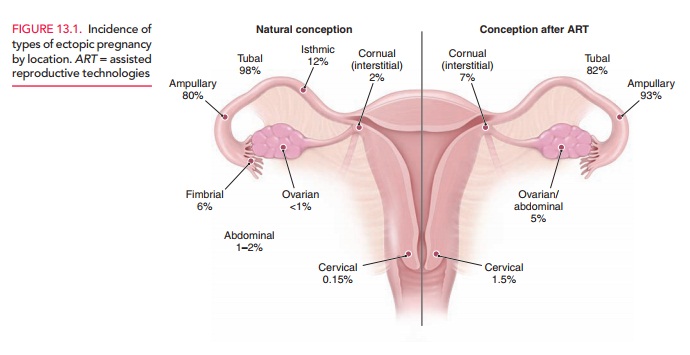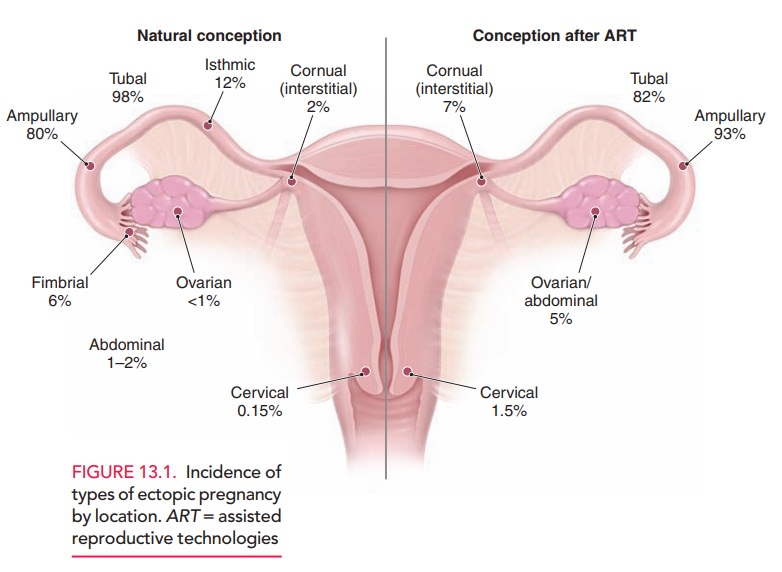Chapter: Obstetrics and Gynecology: Ectopic Pregnancy and Abortion
Ectopic/Abnormal Pregnancy

ECTOPIC PREGNANCY
An ectopic or extrauterine
pregnancy is one in which the blastocyst implants anywhere other than the
endome-trial lining of the uterine cavity. As shown in Figure 13.1, 98% of
ectopic pregnancies implant in the fallopian tube, with 80% occurring in the
ampullary segment. Other locations include, but are not limited to, the ovary,
cervix, and abdomen. In some form, they account for 1.3% to 2% of reported
pregnancies in the United States.

In the past, ectopic pregnancy
was life-threatening. Earlier diagnosis made possible by the new ability to
detect the β-subunit
of human chorionic gonadotropin (hCG), combined with high-resolution
transvaginal sonography (TVS), has reduced this threat. Nevertheless, ectopic
pregnancies remain an important cause of morbidity and mortality in the United
States. The incidence of ectopic pregnancy has increased consistent with the
rise in chla-mydial infections.
Tubal Ectopic Pregnancy
Without intervention, the natural
course of a tubal preg-nancy can lead to tubal abortion, tubal rupture, or
sponta-neous resolution. Tubal abortion
is the expulsion of products of conception through the fimbriated end.
Thistissue can then either regress or reimplant in the abdomi-nal cavity. Tubal rupture is associated with
significant intra-abdominal hemorrhage, often necessitating surgical
intervention.
Related Topics